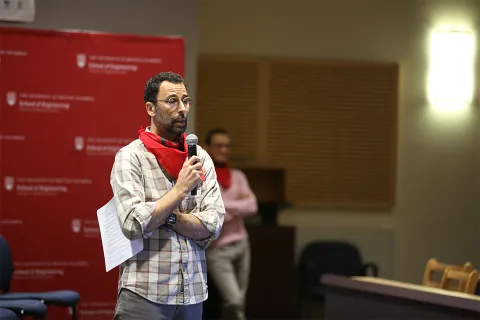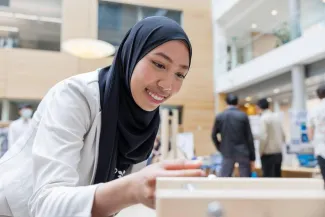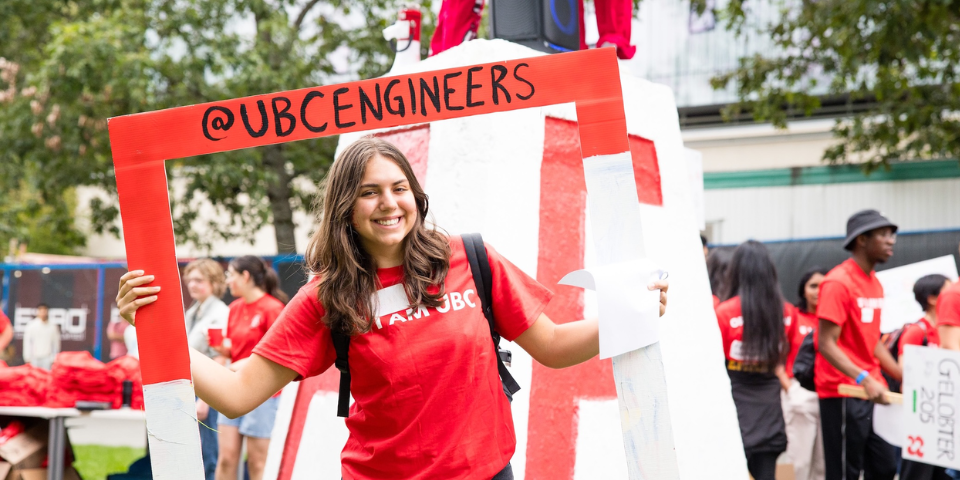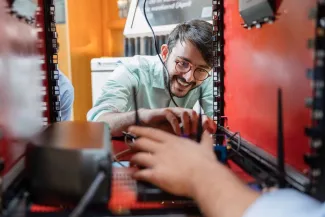
A purpose-driven, service-oriented education
By Dr. Will Hughes, Director of the School of Engineering, UBC Okanagan
Towards the end of their degree, engineering students in Canada receive an iron ring at a ceremony known as the Calling of an Engineer. Worn on the pinky finger of their working hand, the ring is a symbol of an engineer’s ethical responsibilities and a visible pledge of the service orientation of the profession and its role in serving people and communities.
That service orientation has never been so important, given the growing frequency and intensity of the challenges facing our local communities and world – from resource scarcity and water shortages to health crises and the far-reaching impacts of the climate emergency. These challenges are having a profound impact on our ecosystems and economies.
We do this through required courses on technical communication, project management, economic analysis, and law and ethics. Throughout each program we create opportunities for students to practice and grow their soft skills, which, despite their name, are often the hardest skills to develop. I am thinking here of the ability to communicate, to manage conflict, to navigate power dynamics and to know how to use the tools of society – like policy – efficiently, effectively and responsibly.
The strong connections we have with the community where we live, work and study also support these efforts. UBC has built deep and trusted relationships with public and private sector organizations who value our expertise and commitment to developing innovative solutions that are making a difference in both our local context and that can be scaled up for broader impact.

The foundation provided by a UBC engineering degree is exceedingly valuable, giving students a distinct way of thinking about the world and a strong understanding of their responsibility to use their strengths in service of others. The holistic, integrated skills learned here are transferable to any number of paths, whether that’s practising as an engineer or pursuing a different career entirely. How many artists, designers, educators, doctors and CEO’s are engineers? Many!
No matter what engineering students intend to do with their degree, they are all eligible to attend the Calling of the Engineering ceremony at the end of their education.
Receiving and wearing the iron ring is an acknowledgement of all that they have learned (and will continue to learn!) and a reminder of their ethical commitment and responsibility to serve the greater good and use their ingenuity to shape a better future.









